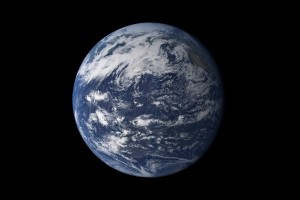Written By Lynne Zeitlin Hale, Director, Global Marine Initiative for The Nature Conservancy
“When you look at the planet from space you don’t see borders – you see blue.”
Secretary John Kerry opened the Our Ocean Conference 2014 at the US Department of State with this comment – setting a tone of shared responsibility. Beyond borders, he continued, we share nothing so completely as our ocean.
Surrounded by heads of state, finance and environmental ministers, philanthropists, scientists and at least one movie star… we discussed threats to our ocean, but more importantly the global community made multiple commitments for action.
President Obama joined via video message announcing two significant actions: first, to create the world’s largest ocean preserve by expanding our national marine monument in the Pacific; and a to create a task force with a six-month deadline to develop recommendations to combat seafood fraud and illegal fishing.
Leonardo DiCaprio joined us kicking off day two by announcing a $7 million commitment from his foundation and added his celebrity to the State Department hosted conference — creating quite a buzz on social media (#OurOcean2014).

Leonardo DiCaprio delivers remarks at the 2014 “Our Ocean” Conference at the U.S. Department of State in Washington, D.C. on June 17, 2014. (Courtesy U.S. State Department)
Kenred Dorsett, Minister from the Bahamas, announced new commitments to marine protected areas for his country and funding for the Caribbean Challenge Initiative that will help the Bahamas protect their ocean, and the livelihoods of those who depend on it.
USAID committed $1.5 million for a multi-donor trust fund for the oceans via the World Bank-sponsored Global Partnership for Oceans.
And the Environmental Protection Agency and National Oceanic and Atmospheric Administration joined with new and stronger commitments of their own to tackle marine debris, fisheries management and ocean acidification.
For my organization’s part, we are thrilled to see the President’s commitment and those of other countries and agencies and we announced a commitment of our own: The Nature Conservancy will work in partnership to map the economic and spatial value of the oceans’ natural systems in five major seascapes.
We see huge opportunity in figuring out the true value to societies of the coral reefs, oyster reefs, mangroves, seagrass, sand dunes and other natural marine systems and where they are distributed. We cannot do this alone and are working with many agencies, universities and organizations including the Global Partnership for Oceans to build on existing science and address any gaps in information. Our goal is to translate ecosystems science into language that policy makers, engineers and community planners can use – so we all make smarter development decisions.
For the hundreds of millions who depend on and care about the ocean, we know that the challenges our oceans face are right here, right now. And, the world is behind schedule on pivoting from “challenge” to “solution” – but the $1.8 billion in total commitments made at Our Ocean conference is a meaningful down payment.
Our Ocean Action Plan
Our Ocean Initiatives
White House Fact Sheet
Taken from: http://blog.nature.org/conservancy/2014/06/18/we-dont-see-borders-we-just-see-blue/
